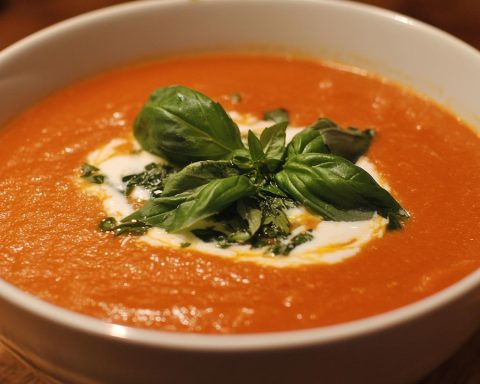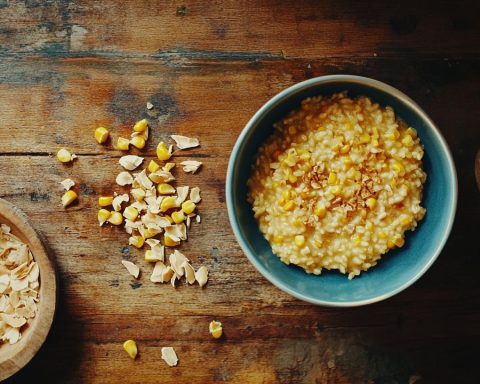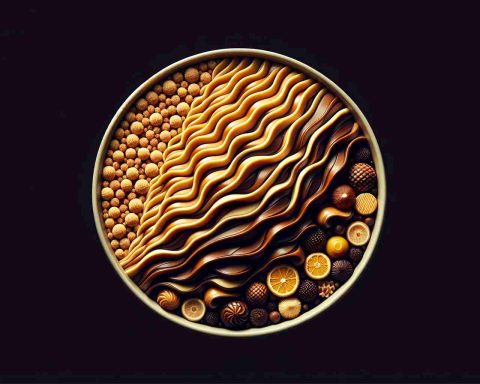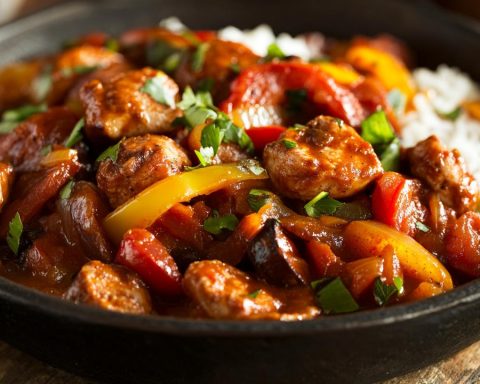Goulash, or “ungari guljašš,” is much more than just a stew; it’s a heartfelt embrace of Hungarian tradition and countryside charm. This iconic dish traces its origins back to the Magyar shepherds who simmered hearty stews over open fires, creating a meal that was as sustaining as it was satisfying. Renowned for its robust flavors and aromatic spices, Hungarian Goulash offers a perfect balance of rich paprika, tender beef, and sweet onions, blending harmoniously into a broth that speaks of warmth and comfort. Perfect for a chilly evening or a cozy family gathering, this dish is a testament to the power of simple ingredients transformed through patient cooking.
Ingredients
– 2 tablespoons of vegetable oil or lard
– 2 large onions, finely chopped
– 2 pounds of beef chuck, cut into 1-inch cubes
– 2 tablespoons sweet Hungarian paprika
– 1 teaspoon caraway seeds
– 1 tablespoon tomato paste
– 3 cloves garlic, minced
– 3 cups beef broth
– 2 bay leaves
– Salt and freshly ground black pepper to taste
– 4 large potatoes, peeled and diced
– 2 carrots, sliced
– 2 green bell peppers, chopped
– 2 tomatoes, peeled and chopped
– Fresh parsley and sour cream for garnish
Instructions
1. Sauté the Onions:
Heat the vegetable oil or lard in a large pot over medium heat. Add the onions and cook until they are golden brown and caramelized. This step is crucial as the onions provide the essential base flavor for the goulash.
2. Brown the Beef:
Add the beef cubes to the pot, searing them in batches if necessary, until they develop a rich, brown crust. This ensures depth of flavor in your stew. Season with salt and pepper.
3. Add Aromatics and Spices:
Stir in the sweet Hungarian paprika, ensuring the beef is well coated. This paprika is the soul of the goulash, lending a smoky, mild heat. Add the caraway seeds, garlic, and tomato paste. Cook for an additional minute until the spices release their aromas.
4. Simmer the Stew:
Pour in the beef broth and add bay leaves. Bring to a gentle simmer. Lower the heat and let it cook slowly, uncovered, for about 1.5 hours, or until the beef is tender and the flavors are thoroughly infused.
5. Add Vegetables:
Add the potatoes, carrots, bell peppers, and tomatoes to the pot. Continue to simmer for another 30 minutes until the vegetables are soft but not mushy.
6. Final Seasoning:
Taste your goulash and adjust the seasoning with additional salt and pepper if needed. Remove from heat and discard the bay leaves.
7. Serve:
Ladle the goulash into bowls, garnishing with a dollop of sour cream and a sprinkle of fresh parsley. For an authentic Hungarian experience, serve with crusty bread or traditional dumplings.
Cooking Tips and Serving Suggestions
– Paprika Power: Use authentic Hungarian paprika to achieve the genuine taste. Mix sweet and hot paprika if you prefer a slight kick.
– Depth of Flavor: Consider adding a splash of red wine midway through cooking for an additional layer of flavor.
– Pairing Ideas: Pair this goulash with a bold Hungarian wine like Egri Bikavér (“Bull’s Blood”) or a crisp Pilsner to complement the savory stew.
For a dish that sings of comfort and nostalgia, Hungarian Goulash delivers warmth and flavor in every spoonful, embodying the essence of tradition and love, perfect for those looking to explore the depth of Eastern European cuisine.
The Lesser-Known Secrets and Surprising Controversies of Hungarian Goulash
Did You Know These Goulash Facts?: Not just a simple rustic stew, Hungarian goulash has transcended its pastoral roots to become a symbol of national identity and culinary prestige. What might surprise many is its role in Hungary’s political history. During the 19th century, goulash was part of a movement to emphasize national identity amidst foreign influence and occupation, further cementing its status beyond just a beloved dish.
Controversies You Might Not Expect: Although widely loved, there exists a culinary debate over goulash’s authenticity. Traditionalists argue that the true goulash should contain only beef, paprika, and onions, rejecting additional ingredients like vegetables or wine. This has led to various regional adaptations, including thickened versions often mistakenly labeled as goulash abroad but more akin to pörkölt or tokány.
What Makes the Paprika So Special?: The soul of any authentic goulash lies in its paprika. Originating from the Kalocsa and Szeged regions, this spice distinguishes Hungarian goulash with its unique sweet and smoky profile. Be wary of substitutes—using generic paprika can dramatically alter the dish’s character.
Foodie Tip: Enjoy your goulash with Budapest’s famous sour cherry soup as a starter for a full Hungarian culinary experience.
Related Culinary Questions: Why is goulash often thicker in international recipes? Western versions often incorporate flour or other thickeners, diverging from the traditional method emphasizing clear, flavorful broth.
Embrace these lesser-known details and controversies of Hungarian goulash, and you may find yourself diving deeper into this irresistible dish’s cultural and culinary significance.








